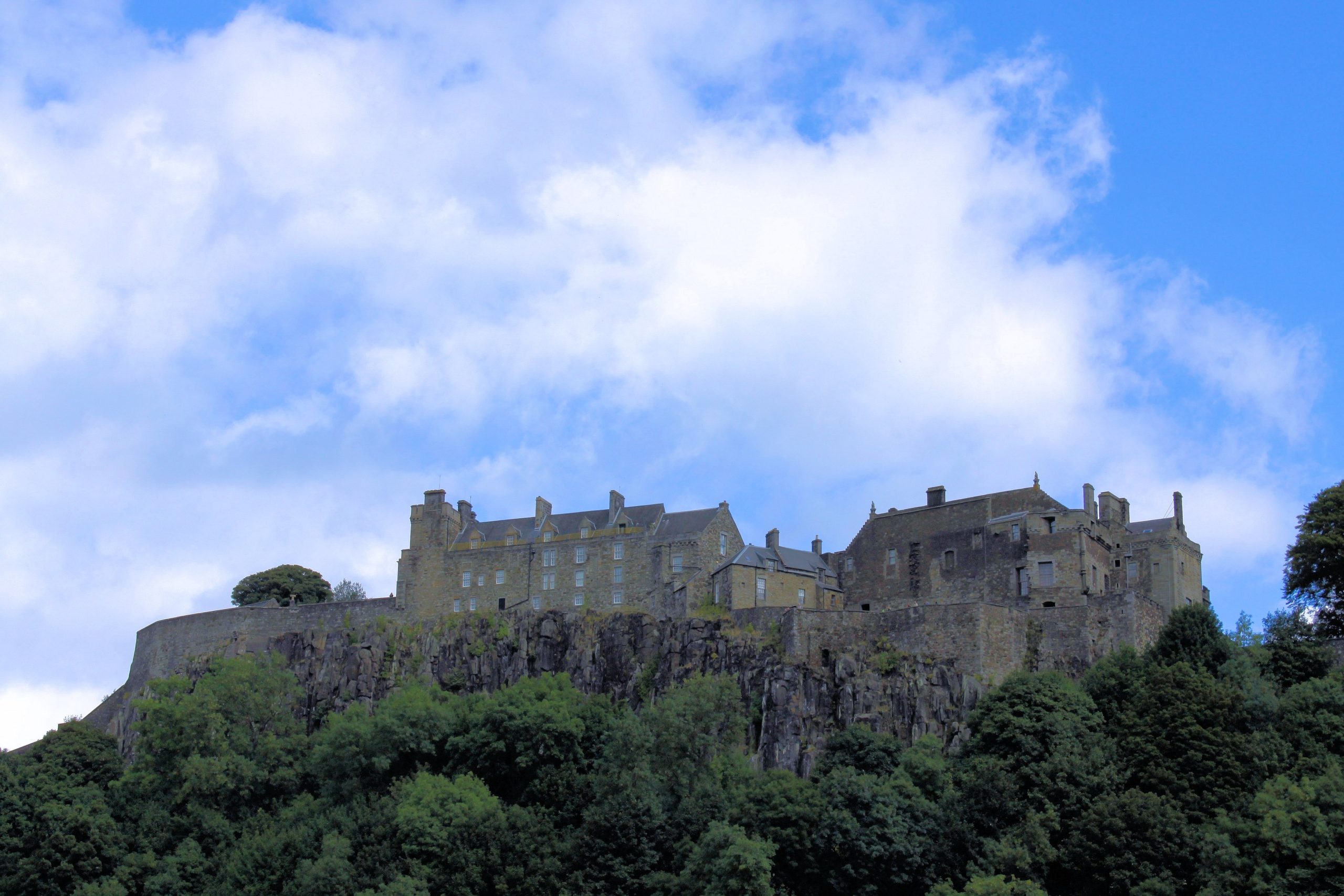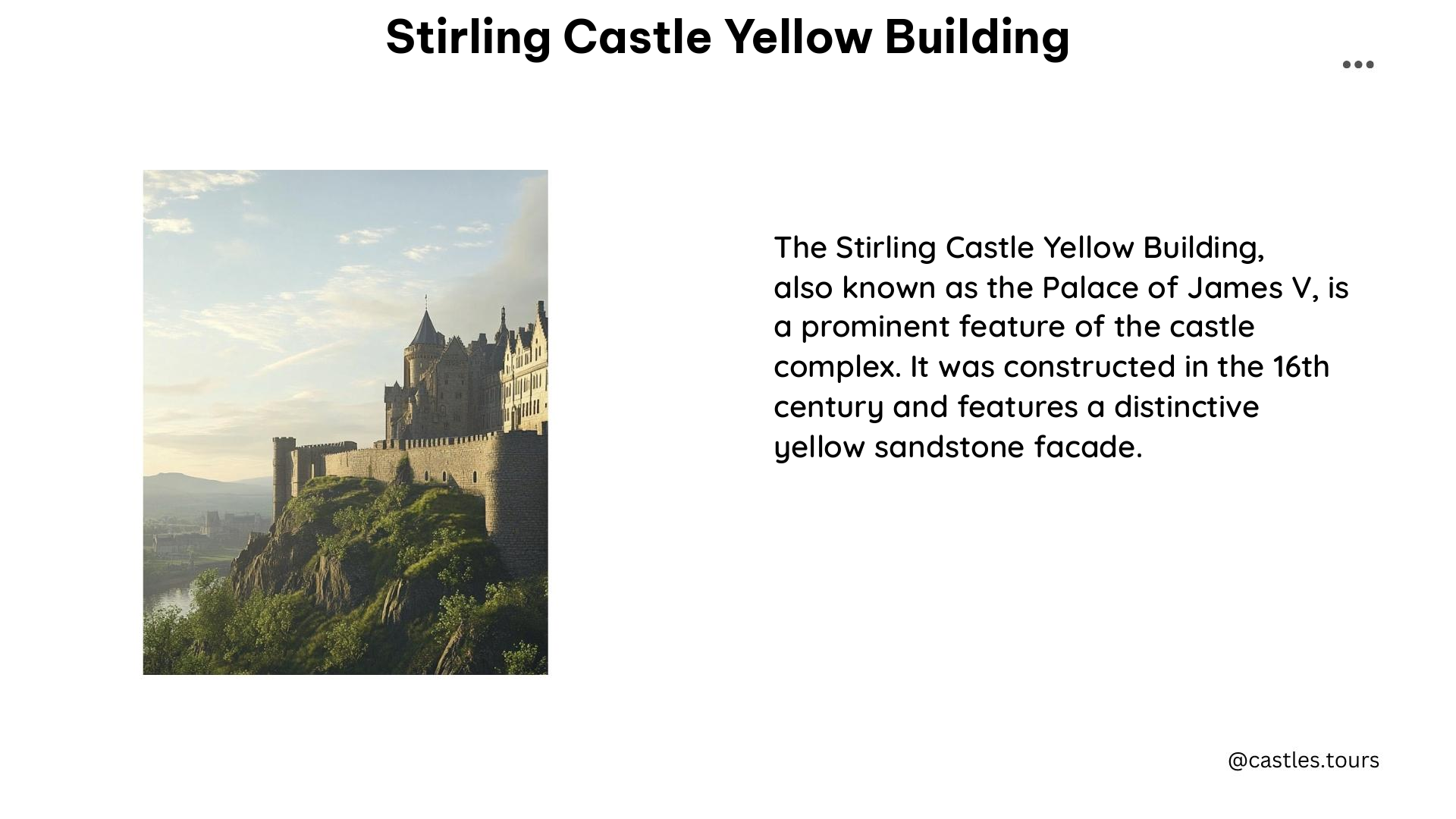The Great Hall at Stirling Castle in Scotland is a remarkable architectural gem, known for its striking yellow exterior. This vibrant hue has captured the attention of visitors and historians alike, as it holds significant historical and cultural significance. In this blog post, we’ll delve into the fascinating story behind the Great Hall’s distinctive appearance and explore its rich history.
Historical Significance of the Stirling Castle Yellow Building

Royal Residence and State Occasions
The Great Hall at Stirling Castle was built between 1501 and 1504 by King James IV, who sought to create a grand venue for state occasions and royal events. As the largest hall ever constructed in Scotland at the time, it served as a testament to the power and prestige of the Scottish monarchy.
The Great Hall hosted numerous important events throughout its history, including:
- The banquet following the baptism of King James VI in 1566
- A meeting of the Scottish Parliament in 1578
- A spectacular banquet after the christening of Prince Henry in 1594, which featured an 18-foot-long wooden ship with brass cannons
These events underscored the Great Hall’s role as a hub of political and social activity, where the Scottish royalty and nobility gathered to celebrate and conduct affairs of state.
Restoration and the Vibrant Yellow Finish
In the late 20th century, the Great Hall underwent a comprehensive restoration project led by Historic Scotland. The aim was to return the hall to its original 1504 condition, which included the reconstruction of the impressive hammer-beam roof and the application of a bright yellow lime wash finish.
The decision to use the yellow ochre lime wash was a deliberate choice, as this color was historically associated with royal residences. The restoration team discovered evidence of this original finish during the renovation process, and they opted to reapply it to protect the stone masonry and maintain the hall’s historical authenticity.
Architectural Features of the Stirling Castle Yellow Building

Hammer-Beam Roof
One of the most striking architectural features of the Great Hall is its impressive hammer-beam roof. This type of roof design, which features a series of projecting timber beams, was a hallmark of medieval architecture and was often used in grand halls and cathedrals.
The restoration of the Great Hall’s roof was a significant undertaking, as the original timber beams had deteriorated over the centuries. The restoration team carefully reconstructed the roof, using traditional techniques and materials to ensure that it remained true to the original design.
Lime Wash Finish
The application of the bright yellow lime wash finish to the exterior of the Great Hall was a crucial aspect of the restoration project. This type of finish was commonly used in medieval and Renaissance-era buildings, as it provided a protective layer for the stone masonry and helped to create a cohesive, visually striking appearance.
The lime wash used in the restoration of the Great Hall was made from a mixture of lime, water, and pigments, which were carefully applied to the building’s exterior. The result is a vibrant, golden-hued facade that immediately catches the eye of visitors and helps to reinforce the hall’s status as a royal residence.
Controversy and Community Response
The restoration of the Great Hall’s distinctive yellow appearance was not without its critics. When the newly restored building was unveiled in 1999, some members of the local community expressed their displeasure with the dramatic change in the castle’s appearance.
Despite the historical accuracy of the restoration, many residents were accustomed to the castle’s previous, more muted appearance and were taken aback by the sudden introduction of the bright yellow finish. This reaction highlights the challenges that can arise when restoring historic buildings, as the local community may have strong emotional attachments to the existing appearance.
Visitor Information
Stirling Castle, including the iconic Great Hall, is located in the city of Stirling, Scotland. The restored Great Hall was officially opened by Queen Elizabeth II on November 30, 1999, and it continues to be a popular attraction for visitors to the castle.
Additional Resources
For those interested in learning more about the Great Hall and its restoration, there are several additional resources available:
- The story of the Great Hall’s restoration is discussed in the podcast “The Great Restoration” by 99% Invisible.
- A video about Stirling Castle’s bright yellow hall can be found on YouTube.
References
- https://gsaarchives.net/2015/11/the-unexpected-complexity-of-the-art-of-restoration/
- https://99percentinvisible.org/episode/the-great-restoration/
- http://www.slate.com/blogs/the_eye/2015/08/26/scotland_s_stirling_castle_the_great_hall_illustrates_the_complexity_of.html
- https://www.undiscoveredscotland.co.uk/stirling/stirlingcastle/greathall.html
- https://www.youtube.com/watch?v=1E_UOfKP7Xg
